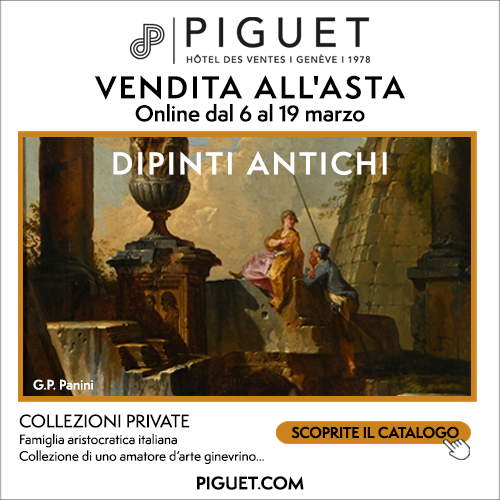Venice, the Doge's Apartment returns to the Doge's Palace. With a new layout
Starting today, in Venice, theDoge’s Apartment is once again part of the exhibition itinerary, open to all visitors to the Doge’s Palace, with a new display created to tell the ultramillennial story of what has been one of Venice’s most solid and long-lived institutional figures. Of Doges, the Serenissima elected as many as 120, from the first, Paoluccio Anafesto in 697, until the abdication of Ludovico Manin, the last, in 1797.
The Doge’s Apartment was the most private heart of the Ducal Palace. It enclosed representative spaces precluded to most, reserved for restricted meetings and audiences, and was strategically located in the wing of the Palace between the Rio della Canonica, the Golden Staircase and the Basilica of St. Mark’s. The location of the apartment remained more or less the same over the centuries, although it changed in texture and appearance during the palace’s many renovations. The current Renaissance appearance dates back to the late 16th century. The new exhibit aims to present the figure of the doge to today’s public, documenting the fascinating tale through some 100 paintings, sculptures, artifacts, maps and manuscript and printed texts, ducal promises and commissions, medals and coins.
The starting point of the itinerary, which from July 14 will be available to visitors, is theelection of the doge: here the tools, method, and symbols of the election as doge are presented, accompanied by some anecdotes, such as the longest conclave, and the traditional coronation ceremonies. Next, in Sala Grimani, the theme of diplomacy and international relations, essential to the preservation and prosperity of Venice, is addressed. In the next room, some of the most important battles fought by the Venetians are recounted, still preferring, as a vantage point, the life of the doge: Sebastiano Venier for the Battle of Lepanto (1571) and Francesco Erizzo for the beginning of the War of Candia (Crete), a doge to whom, among other things, the apartment room(Sala Erizzo) is dedicated. In the Sala degli Stucchi to be the protagonist of the story is the famous conspiracy of Baiamonte Tiepolo, the cause of the establishment of the very powerful Council of Ten, a body created from the need to prevent rebellions and attacks against the state. The next room presents the figure of the doge as a patron and patron of the arts. The next rooms instead explore the more mundane and princely aspects of the doge’s life: the relationship with the dogaressa, the festivals and ceremonies that punctuated the calendar of the Serenissima. This is followed by the theme of the doge’s and dogaressa’s dresses over the centuries, dresses that, rather eloquently, give an account of the Byzantine origin of the doge’s institution and the transformation of the doge into a “Most Serene Prince.” Even the death of the doge, to which the next room is dedicated, is subject to strict etiquette, always aware that “Se l’è mort el Doxe, no l’è morta la Signoria.”
The itinerary closes with a room illustrating the events of the last doges and a focus on the last doge Ludovico Manin, whose abdication in 1797 corresponds to the fall of the Republic and the end of the history of the Serenissima. The last of the 12 rooms of the Ducal Palace’s new thematic itinerary is dedicated to educational and in-depth activities by the Educational Activities Office.
What opens today, emphasizes Muve Foundation President Mariacristina Gribaudi, is “an important project to enhance the value of works from the civic heritage held by the Muve Foundation and largely not usually on display, which tell the salient moments in the history of the ducal institution. With precise didactic purposes, emphasis has been placed on major events but also on anecdotes and minor events, strict ceremonial etiquette, insights (including lexical) and curiosities, starting precisely from the material evidence in the Exhibition.”
“These are private and public stories, traditions, festivals and ceremonies that, as a whole, present the doge in a composite and at times unusual, though always historically accredited, perspective, capable of giving an account of a well-rounded figure, inextricably linked to Venice and its long history,” adds the Mayor of Venice, Luigi Brugnaro.
“The doge, a head of state of Byzantine origin with military connotations already in his title - doge derives from the Latin dux, military commander - in Venice rose, over the centuries, to official representative in the eyes of the world of the Serenissima.”, explains Chiara Squarcina, head of the museum office, “’Monsignor the Doge,’ as he is called in public acts, is the symbol and embodiment of Venetian power, the protagonist of solemn public ceremonies, receptions and festivities. His real power, however, is limited and controlled by the Venetian merchant aristocracy while his person is under the constant vigilance of the ducal advisers because, although he is the ’Most Serene Prince,’ he is and remains, to all intents and purposes, the first servant of the Republic. With perfect and frank synthesis, the doge is said to be Princeps in solemnitatibus, in curia senator, in urbe captivus, extra urbe reus (prince in solemnities, senator in the senate, prisoner in the city, guilty outside the city).”
Pictured is a passage from the new exhibit. Photo: Elisa Chesini
 |
| Venice, the Doge's Apartment returns to the Doge's Palace. With a new layout |
Warning: the translation into English of the original Italian article was created using automatic tools. We undertake to review all articles, but we do not guarantee the total absence of inaccuracies in the translation due to the program. You can find the original by clicking on the ITA button. If you find any mistake,please contact us.




























